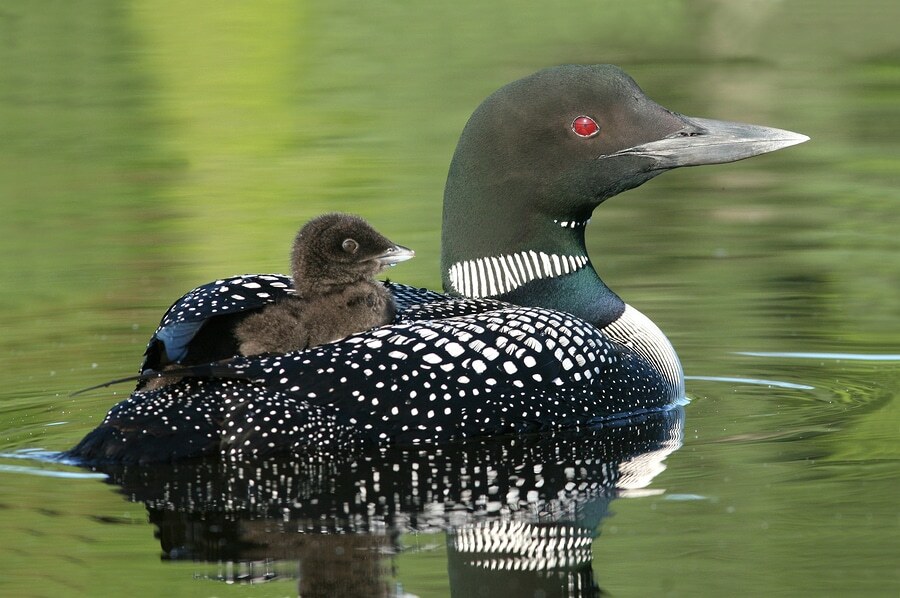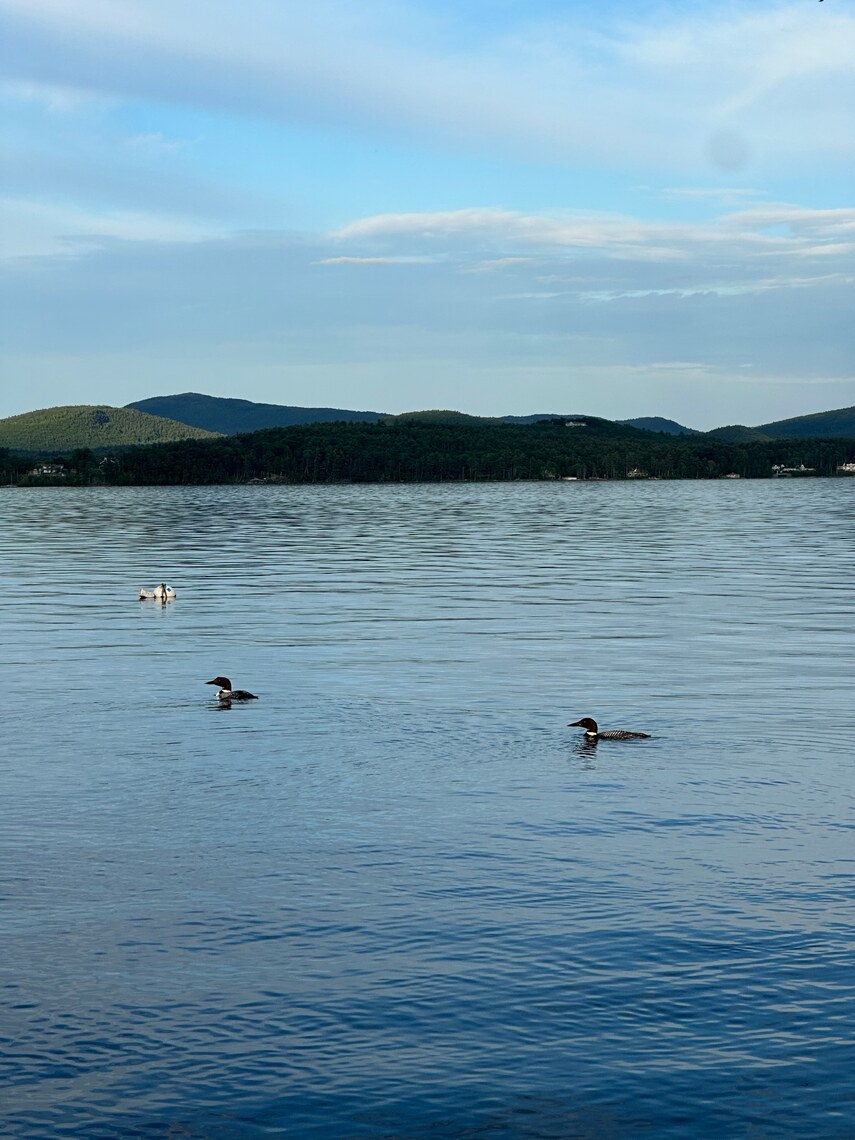Lake Winnipesaukee comes alive with the majestic presence of loons, captivating visitors and locals alike with their haunting calls and graceful movements. These iconic birds, known for their striking black and white plumage and eerie cries are a common sight on the lake during the summer months.
As the largest lake in New Hampshire, Lake Winnipesaukee provides an ideal habitat for loons, offering ample space for nesting, feeding and raising their young. In June, loons can often be spotted gliding across the waters of the lake and diving beneath the surface in search of fish and other aquatic prey.
One of the most fascinating aspects of loons is their unique vocalizations, which serve as a means of communication between individuals and can be heard echoing across the lake in the early morning and evening hours. These calls are an essential part of the loon’s social behavior and play a crucial role in establishing territories and attracting mates. Each male has its own signature “yodel” which he will change if he moves to a new territory!
During the month of June, visitors to Lake Winnipesaukee have the unique opportunity to observe loons engaging in courtship rituals, building nests, and caring for their young. Loons can live up to 30 years and it is believed that loons mate for life! At the early stages of their lives, loon chicks can be seen getting a ride on their parent’s back. Loons are quite large, heavy birds, and due to the position of their legs and large, webbed feet on their sleek bodies, they can’t walk well, or at all, really. If forced to go on land, a loon has to slowly slide along on its stomach. Due to this limitation, loons build their nests right on the water’s edge, or on one of the many man-made nesting rafts that now exist on Lake Winnipesaukee and the surrounding lakes.

As a protected species in New Hampshire, it is important for visitors of Lake Winnipesaukee to respect the loons and their habitat by observing them from a distance and refraining from any activities that may disturb or harm them. Please adhere to no-wake signs on the lake that signify sanctuaries and nesting grounds. Careless boaters do pose a problem, but the largest threat to the loon population in New Hampshire is lead fishing tackle. Loons will never pass up an easy meal and will often go for larger fish who have been hooked by anglers. The tough gizzard of a loon can handle sharp objects, but if ingested in even the slightest amount, lead tackle will cause poisoning and will kill a loon in as little as two weeks. Luckily, lead tackle can no longer be sold or purchased in New Hampshire, but older tackle poses a risk. If you find grandpa’s old tackle box, it may be a good idea to look through the hooks, jigs and weights before rigging up your rod!
If you want to get a closer look at these amazing birds without getting on the water, the Loon Preservation Committee has a live “Loon Cam” which showcases two of their designated nesting sites. You can watch loons nest up-close and personal until the day their eggs hatch! You feel like you're part of the family!

Loon pair fishing off of Ship Island in Alton, NH.

